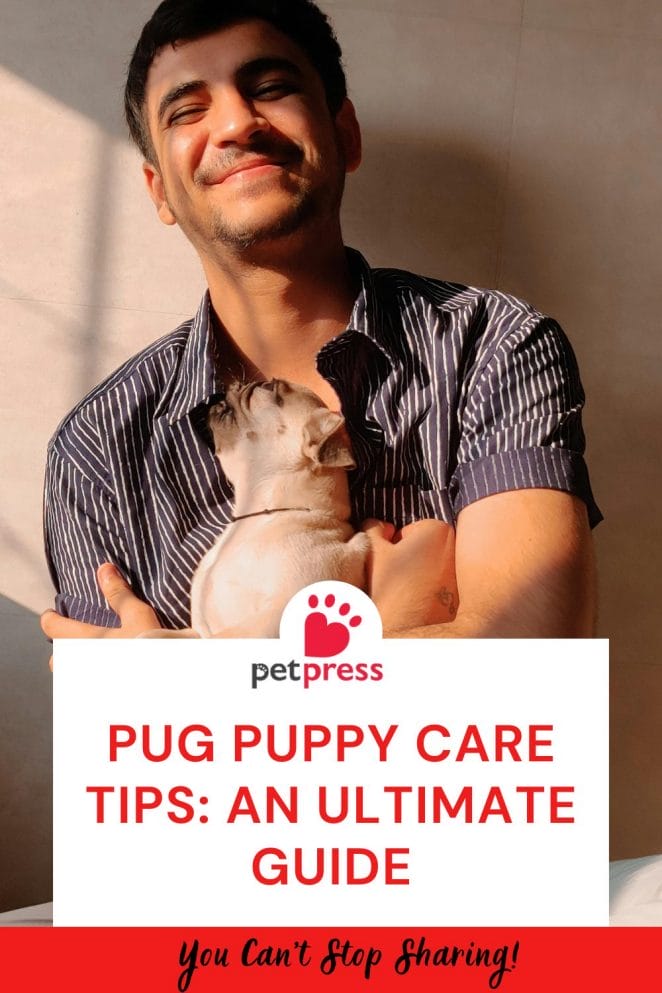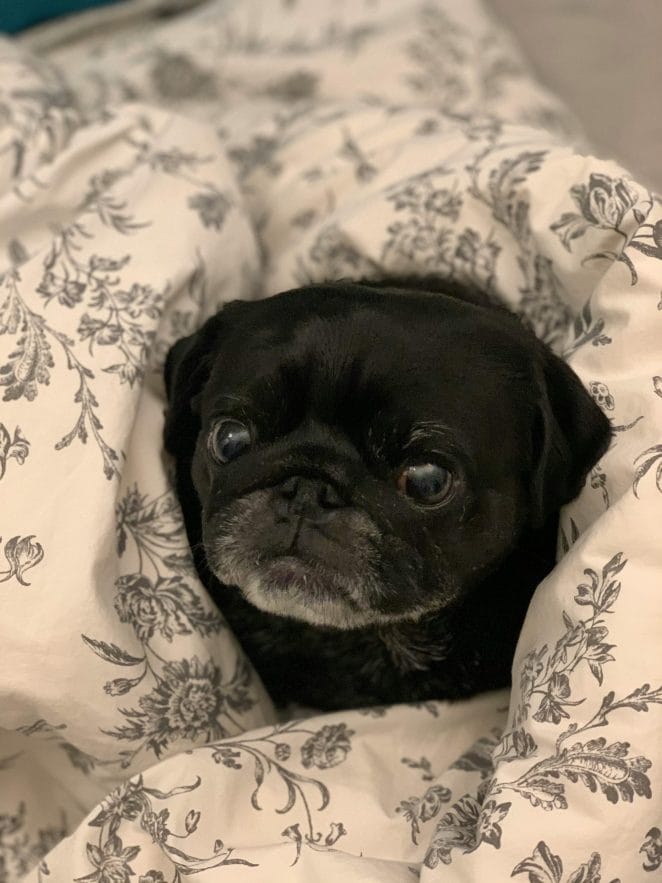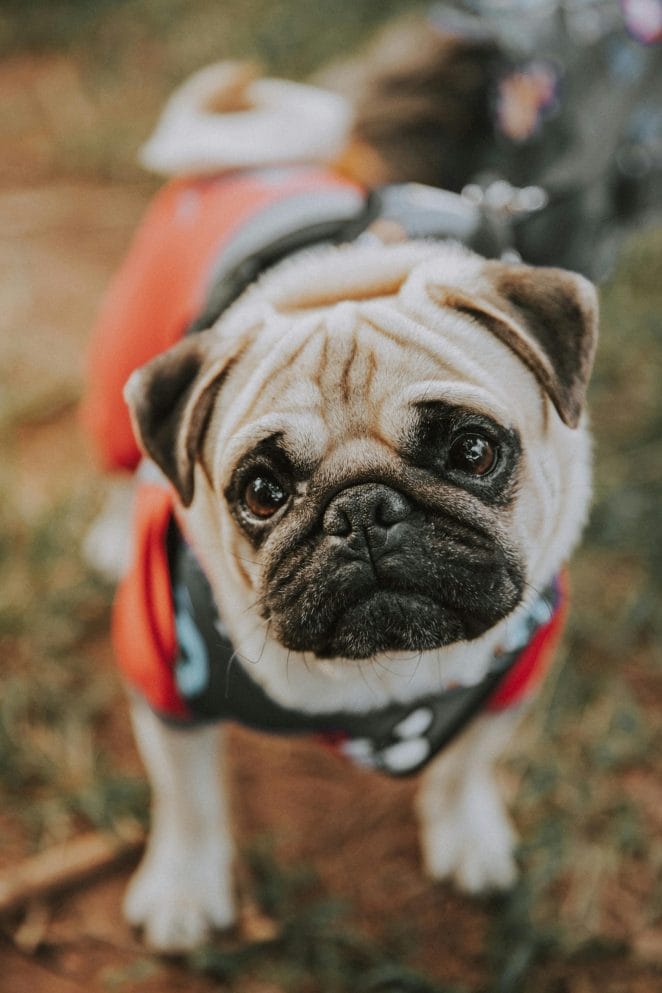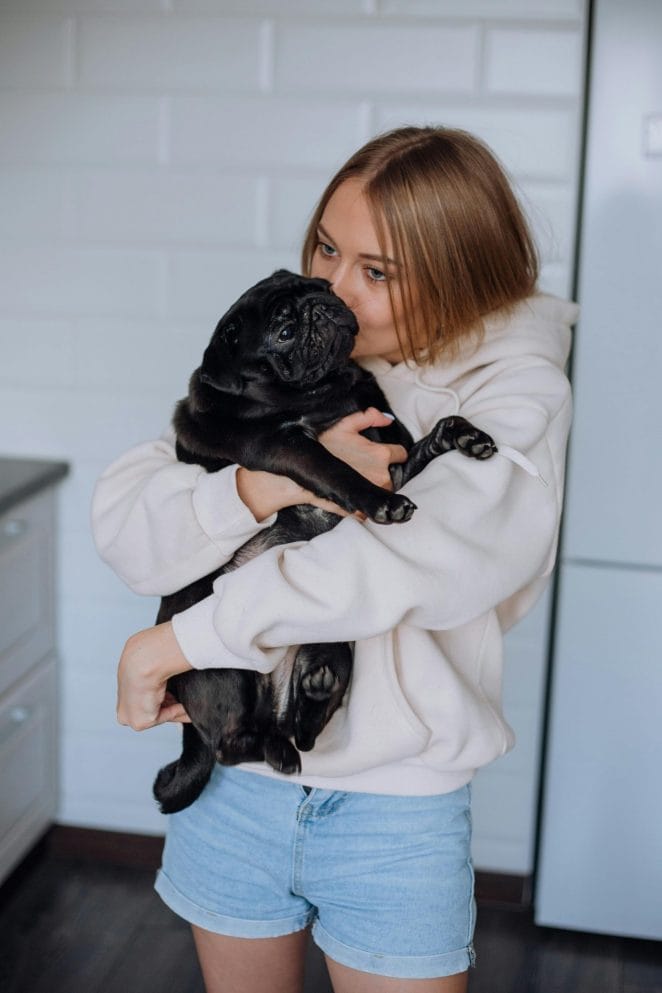
Pug puppy care tips demand significant attention and dedication, particularly during their pivotal first six months of growth and development.
Pugs stand prominently among the most sought-after canine companions, captivating hearts with their irresistibly expressive and adorable visage.
Concerning the health of these endearing creatures, challenges can arise, much like with any other breed.
Statistical trends suggest that, on average, Pugs may encounter at least one significant health issue, often two, throughout their lifetime.
While such occurrences may seem beyond our control, acknowledging the role of fate, there are proactive measures—both evident and subtle—that can be taken to enhance the likelihood of a Pug enjoying a prolonged and flourishing existence.
What are Pugs bred for?
Pugs trace their lineage back to ancient China, where they emerged as one of the earliest lapdog breeds, boasting a history spanning nearly 2000 years.
Their origins indicate a predisposition for close companionship, as these affectionate canines thrive in the presence of their human counterparts and aren’t particularly fond of solitude.
Renowned for their suitability as indoor companions, Pugs strike an ideal balance between playfulness and calmness, making them well-suited for domestic life.
Their demeanour is characterized by a delightful blend of joviality and charm, with each Pug exuding its unique personality traits.
As long as they are allowed to be in the company of their beloved owners as much as possible, Pugs radiate happiness and serve as endearing, comical companions.
History Related to Pug Puppy Care Tips

The pug stands as one of the most ancient dog breeds globally, boasting a lineage that stretches back to at least 400 BC.
While the true origins of the pug remain a topic of debate, prevailing belief points to its roots in China.
Some speculate a connection to the Pekingese breed, while others suggest possible descent from the bulldog or mastiff.
In ancient China, emperors held these diminutive dogs in high regard, considering them prized possessions and coveted gifts.
Their esteemed status led to their widespread admiration and propagation throughout the world, beginning as early as the 1500s.
Notably, pugs found favour among European royalty, a trend that fueled increased breeding efforts.
An intriguing anecdote from history solidifies the pug’s significance:
According to the American Kennel Club, a pug’s bark once saved the life of a Prince of Orange by alerting him to an impending Spanish attack.
This courageous act elevated the pug’s status to the mascot of Holland’s royal House of Orange.
When William and Mary of Orange later brought their pugs to England, the breed’s presence sparked considerable fascination and demand among the British populace.
Formal recognition by the American Kennel Club occurred in 1885, cementing the pug’s place in the annals of canine history.
Today, the breed remains highly esteemed and maintains its popularity, enduring as one of the most beloved and sought-after dog breeds in the United States.
Fun Facts to know about Pug Puppy

Here’s a comprehensive guide to understanding and caring for pugs:
- Affectionate and Entertaining: Pugs are renowned for their affectionate nature and unwavering loyalty. They thrive on attention and often exhibit playful antics to charm their owners.
- Intelligent Yet Playful: These dogs are smart and observant, making them quick learners. However, they may lose interest in training if it lacks excitement. Keeping training sessions fun and engaging is key.
- Social Creatures: Pugs deeply value human companionship and can develop separation anxiety if left alone for extended periods. Early socialization and gradual exposure to alone time can help prevent such issues.
- Comedic Personalities: Prepare to be amused by their comedic antics. Pugs possess strong personalities and a knack for making their owners laugh with their clown-like behaviour.
- Moderately Playful: While they enjoy playtime, pugs are not overly energetic. However, a lack of mental stimulation can lead to them finding their entertainment, often in the form of destructive behaviour.
- Chewing Needs: Pugs have a natural inclination to chew, especially during teething. Providing appropriate chew toys is essential to redirect this behavior and protect your belongings.
- House Training Challenges: Pugs may present some challenges in house training, so consistency and patience are key. Start early and remain consistent with training methods.
- Rough Play: Despite their small size, pugs can engage in rough play. Supervise interactions with larger dogs to ensure their safety.
- Disinterest in Fetch: Unlike some breeds, pugs may not show much interest in games of fetch. Instead, focus on activities that stimulate their minds and keep them engaged.
- Weather Sensitivity: Pugs are not well-suited to extreme weather conditions. Avoid hot weather walks and provide them with a cosy jumper during colder months to keep them comfortable.
By understanding these characteristics and providing appropriate care and attention, you can ensure a happy and fulfilling life for your pug companion.
Pug Puppy Care Tips

Here are some essential tips for keeping your pug healthy and safe:
Maintain a Healthy Weight
Contrary to popular belief, pugs shouldn’t be overweight. They should have a muscular and solid build.
Monitor your pug’s weight regularly and adjust their diet as needed. Avoid feeding them human food and opt for dry chow over canned food.
Limit treats and consult your veterinarian for guidance on proper portion sizes.
Regular Exercise
While pugs enjoy their naps, they also need daily exercise to stay healthy. Aim for daily walks to help keep their weight in check and promote cardiovascular health.
Pay attention to signs of fatigue or discomfort, and adjust the intensity of the exercise accordingly. Even short walks can suffice as long as they’re consistent.
Avoid Smoking Around Your Pug
Pugs already have respiratory challenges, so exposing them to second-hand smoke can exacerbate their breathing issues.
If you smoke, do so away from your pug to minimize their exposure to harmful toxins.
Secure Your Yard
Ensure your pug’s safety by fencing in your yard or setting up a secure outdoor area for them to play.
This prevents accidents with vehicles, and encounters with larger dogs or animals, and reduces the risk of your pug getting lost or stolen.
Use a Leash
Whenever you’re outside your home or yard, keep your pug on a leash. Even if you’re carrying them, keep the leash wrapped around your hand for added security.
Pugs can be curious and may dart off unexpectedly, so it’s crucial to keep them under control when out and about.
By following these tips, you can help ensure your pug stays healthy, happy, and safe in their environment.
Pug Puppy Care Tips: Frequently Asked Questions
Once they are socialized and trained, pugs may make wonderful family companions. Although dogs should always be watched by young children, they are often tolerant of them.
Pugs are generally calm, amiable dogs that don’t bite. They even tend to be amiable with strangers and show care toward their relatives.
Pugs don’t require a lot of space to run around and play, therefore they can live happily in a tiny house like an apartment. Still, they must go outside and exercise each day.
Although you shouldn’t leave a dog alone for longer than four hours, pugs can be left alone. Plan to hire a dog walker or someone who can visit your home and spend time with your dog if you must be away from it for extended periods.
Given that the majority of pugs are overweight for their size, exercise is essential for good health! They require daily walks, and it’s best to encourage them to play and be active as much as possible. You can get your puppy active by getting them a few toys.


GIPHY App Key not set. Please check settings